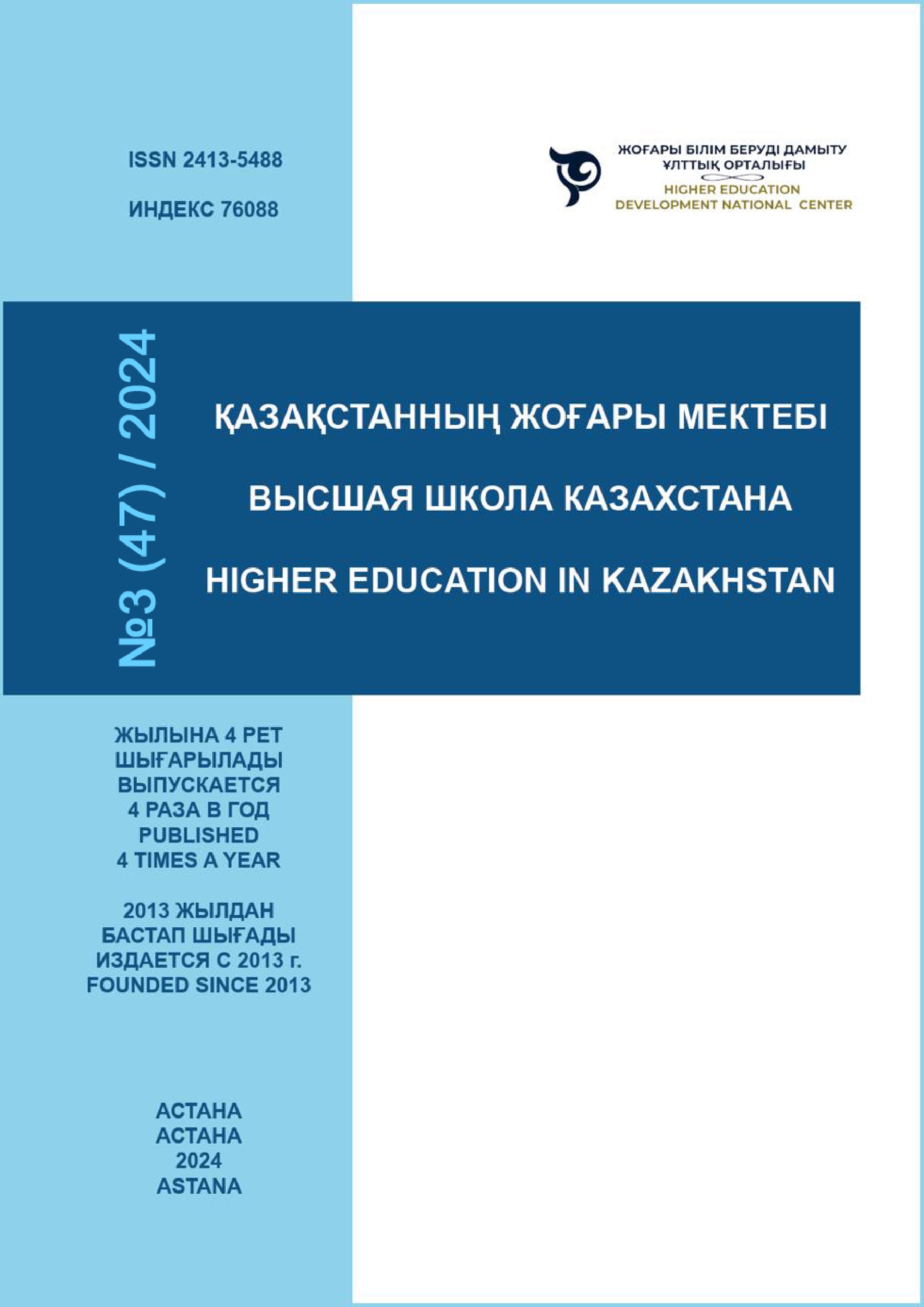INNOVATIONS FOR INNOVATIONS: WHAT EDUCATIONAL PROGRAMS SHOULD BE LIKE
DOI:
https://doi.org/10.59787/2413-5488-2024-47-3-140-153Аңдатпа
The changing economic structure, the emergence of innovative technologies, the growing importance of sustainable development, social challenges, and the need to find new non-standard solutions have predetermined the need for a new type of professionals in the labor market. Consequently, new requirements are imposed on universities to prepare graduates capable of solving the problems of the innovative economy. The approach to developing academic excellence through the development and implementation of innovations is becoming a marker of the quality of education. Universities can ensure that graduates achieve learning outcomes only through innovative educational programs.
The article analyzes the understanding of the concept of "innovative educational programs". The authors studied the interpretation used in regulatory acts, scientific publications. Based on the analysis of publications, they developed a classification of innovations in education. To clarify the understanding, a survey of educational program developers and top management was conducted, based on which the perception of the academic community was identified, and distinctive characteristics were formulated.
Әдебиеттер тізімі
Barrichello, A., Morano, R. S., Feldmann, P. R., & Jacomossi, R. R. (2020). The importance of education in the context of innovation and competitiveness of nations. International Journal of Education Economics and Development, 11(2), 204-224.
Bell, D. (2020). Post-industrial society. In The information society reader, Routledge, 86-102.
Biloshchytskyi, А., Omirbayev, S., & Mukhatayev, A. (2021). Methods of project-vector management of educational environments. Scientific Journal of Astana IT University, 15-31.
Chandra, P., Tomitsch, M., & Large, M. (2021). Innovation education programs: a review of definitions, pedagogy, frameworks and evaluation measures. European Journal of Innovation Management, 24(4), 1268-1291.
Evans, J. (2002) Marketing: trans. from English, Moscow: Sirin.
Foray, D., & Raffo, J. (2014). The emergence of an educational tool industry: Opportunities and challenges for innovation in education. Research Policy, 43(10), 1707-1715.
Goldyakova, T. V. (2006). The concept and classification of innovations. Russian Foreign Trade Bulletin, (2), 20–27.
Halász, G. (2018). Measuring innovation in education: The outcomes of a national education sector innovation survey. European Journal of Education, 53(4), 557-573.
Husig, S., Schewe, G., Shaimieva, E. Sh., & Gumerova, G. I. (2021). International classification of innovations based on the Oslo Manual: meaning, new concepts. In Scientific research: fundamental and applied aspects, 154–157.
Jacobs, C. (2000). The Evaluation of Educational Innovation. Evaluation, 6(3), 261-280. https://doi.org/10.1177/13563890022209280
Jacobs, C. (2000). The Evaluation of Educational Innovation. Evaluation, 6(3), 261-280. https://doi.org/10.1177/13563890022209280
Kupriyanov, A. N. (2020). Formation of innovative educational programs and principles of their implementation. In Integration of higher education and the corporate sector in the new social environment, 308–312).
Looney, J. (2009). Assessment and innovation in education.
Lovelock, K. (2005). Marketing of services.
Lucia, K., Katarina, S., Jan, P., & Zdenko, S. (2022). Drivers of Innovation Activity in European Countries: Proactive vs. Reactive Approach. Academy of Strategic Management Journal, 21, 1-14.
Mandic, D., Lalic, N., & Bandjur, V. (2010). Managing innovations in education. Recent Adv. Artif. Intell. Knowl. Eng. Data Bases.
Maritz, A., De Waal, A., Buse, S., Herstatt, C., Lassen, A., & Maclachlan, R. (2014). Innovation education programs: toward a conceptual framework. European Journal of Innovation Management, 17(2), 166-182. Berman, P., & McLaughlin, M. W. (1976, March). Implementation of educational innovation. In The educational forum, Vol. 40, 3, 345-370.
OECD/Eurostat (2018), Oslo Manual 2018: Guidelines for Collecting, Reporting and Using Data on Innovation, 4th Edition, The Measurement of Scientific, Technological and Innovation Activities, OECD Publishing, Paris/Eurostat, Luxembourg, https://doi.org/10.1787/9789264304604-en.
Ramírez-Montoya, M. S., Castillo-Martínez, I. M., Sanabria-Z, J., & Miranda, J. (2022). Complex thinking in the framework of Education 4.0 and Open Innovation—A systematic literature review. Journal of Open Innovation: Technology, Market, and Complexity, 8(1), 4.
Roberts, K., & Owens, S. (2012). Innovative education: A review of the literature. American Journal of Industrial Medicine, 8(3), 207-217.
Routledge. Gámez Gutiérrez, J., & Garzón Baquero, J. E. (2017). New cross-proposal entrepreneurship and innovation in educational programs in third level (tertiary) education. Contaduría y administración, 62(1), 239-261.
Schumpeter, J. A., & Swedberg, R. (2021). The theory of economic development. Routledge.
Stepanenko, D. M. (2009). Innovation process and innovation activity: concept, essence, characteristics. Problems of Modern Economy, (4), 36–40.
Stepanenko, D. M. (2012). The term "Innovation" as a categorical basis for a set of interrelated concepts. Science of Krasnoyarsk, (1), 65–74.
Urban, G. L., & Hauser, J. R. (1993). Design and marketing of new products. New York: Pretentice–Hall; Englewood Cliffs, 472 p.
Westera, W. (2004). On strategies of educational innovation: Between substitution and transformation. Higher education, 47, 501-517.
Zagvyazinsky, V. I. (2007). Innovative processes in modern education. The world of science, culture, education, (1), 83–84.














